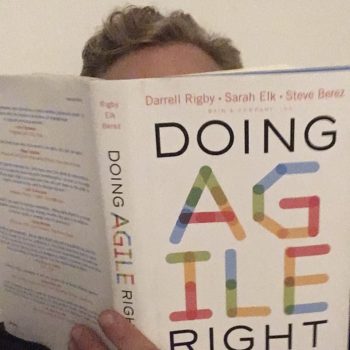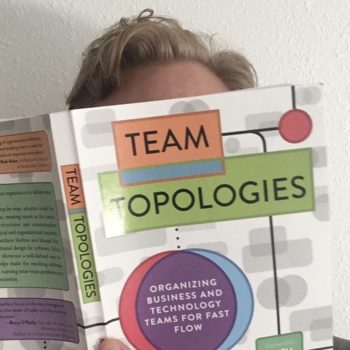How strongly do I recommend Doing Agile Right?
8 / 10
Review of Doing Agile Right
Most agile books discuss implementation at the team level – scrum, kanban boards, WIP, retros, and the like.
Doing Agile Right discusses the application of agile principles and methodologies across the organization, especially to business support functions like HR, Finance, and IT.
I highly recommend this book for transformational leaders trying to improve the performance of their entire organization, particularly within industries that demand innovation.
Top Ideas in This Book
- The Scaled Agile Framework delivers many agile teams, but an Agile Enterprise delivers agile business systems
- Pilot agile projects sometimes succeed because the sponsor can bulldoze, not because of team execution
- Scaling agile efforts often fail when the team leading the initiative tries a big bang approach, not using agile methodologies themselves
- Most agile enterprises maintain some level of central bureaucratic structure, especially for functions like finance and legal
- Resist the urge to copy other company org charts when scaling agile
- Desire to increase innovation is among the best reasons to scale agile
- The biggest myth in scaling agile is that planning is thrown out
The Scaled Agile Framework delivers many agile teams, but an Agile Enterprise delivers agile business systems
Most organizations attempting to scale agile apply the SAFe framework, which helps create agile teams across the organization – particularly in areas like product development.
However, agile principles and methodologies are often not applied to business support functions like HR, Finance, and IT. In an agile enterprise these traditional business support functions also embrace agile.
Pilot agile projects sometimes succeed because the sponsor can bulldoze, not because of team execution
When scaling agile, many organizations start with pilot projects supported by the CEO, COO, or another executive. This leader can often pull enough strings or carries enough weight to ensure the pilot project’s success, even if the team has poorly executed the plan.
The danger lies in the team believing they have successfully executed agile, then following that approach across the organization, which is bound to fail because the bulldozer is not applied.
Scaling agile efforts often fail when the team leading the initiative tries a big bang approach, not using agile methodologies themselves
Some companies feel it’s easier or more cost effective to switch everyone to agile all at once. This demonstrates a poor understanding and appreciation for agile – as if the team is saying agile is good… but not for them.
Most agile enterprises maintain some level of central bureaucratic structure, especially for functions like finance and legal
Finance and legal are prime examples of a business function that will almost always retain some bureaucratic structure with slower iteration cycles.
Resist the urge to copy other company org charts when scaling agile
Spotify is the prototypical example of a company that publishes their org chart and approach to agile and then is blindly copied directly by many other companies, without regard to the business context. This all happens despite Spotify’s explicit instruction to not copy them directly.
Desire to increase innovation is among the best reasons to scale agile
Scaling agile has the most demonstrated success with regards to increased innovation. On the flip side, if your company does not want to drive innovation you may find agile does not fit.
The biggest myth in scaling agile is that planning is thrown out
Scaled agile organizations and agile enterprises still plan, but their planning iterations are typically more frequent because the strategy iterations are more frequent.

